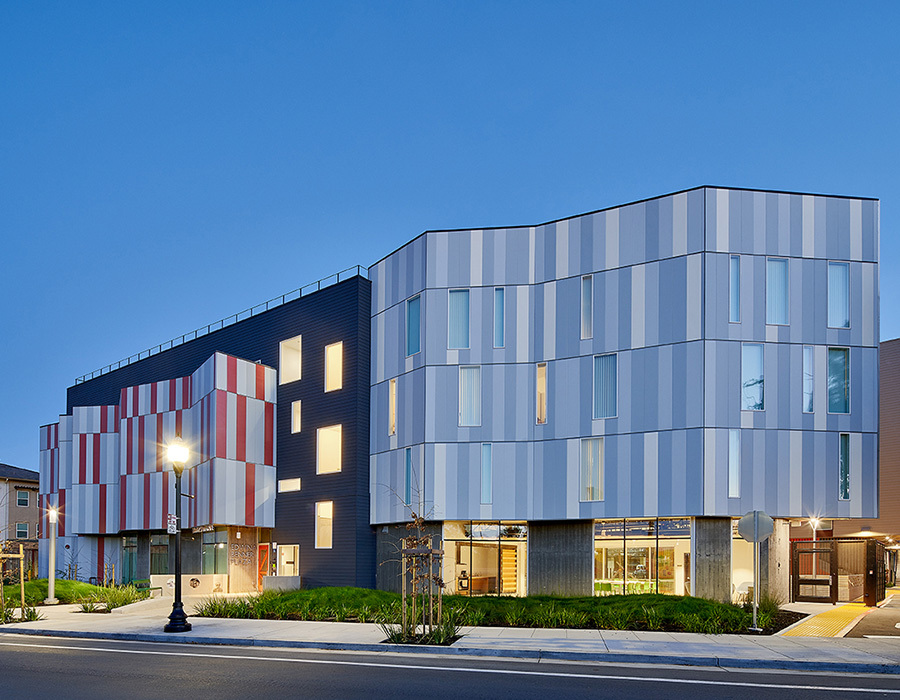What is Building Decarbonization?
What is Building Decarbonization?
Decarbonization is the process of removing fossil fuels from a building’s energy use and using appliances that only use clean electricity.
Strategy 1 focuses on growing clean electricity. Strategy 2 focuses on improving energy efficiency (Play 2.1), supporting existing buildings to be 100% electric (Play 2.2), and achieving all-electric new construction (Play 2.3).
Buildings in Sunnyvale typically use fossil fuels (namely natural gas) to heat spaces, heat water, cook, and dry clothes. As with vehicles, carbon emissions from buildings can be reduced by switching from fossil fuels to clean electricity for residential or commercial building energy needs.
What is Building Decarbonization?
What are the Benefits of Building Decarbonization?
- Healthier and safer homes
- Money and energy savings
- Clean air
- Local green jobs through retrofitting
- Sustainable environment
Play 2.1: Reduce Energy Consumption in Existing Buildings
Efficiency First
There are two broad strategies we use to reduce overall energy use. First, we must address energy use in existing buildings through efficiency. Many buildings in the community are older and have less efficient heating, cooling and lighting systems. We can address these through “deep energy retrofits” to make old buildings as efficient as new buildings. Installing the most efficient appliances when upgrading is key. The second strategy is electrification, learn more under Play 2.2.
What is a Deep Energy Retrofit?
A deep energy retrofit (DER) is broadly categorized as an energy conservation measure in an existing building that comprehensively addresses building systems and insulation to optimize all energy use. Deep energy retrofits achieve at least a 50% energy use reduction by:
- Upgrading mechanical systems, lighting systems, and appliances
- Insulating walls, roofs, crawlspaces, and foundations
- Upgrading HVAC and plumbing
- Replacing windows
- Air sealing
- Installing renewable energy systems where possible.
Play 2.2: Support Electrification of Existing Buildings
Reduce Gas Use in Existing Buildings
While reducing energy use in buildings is the first step, the next is removing fossil-fuel based appliances. For existing buildings, this means replacing gas appliances with electric alternatives. Every household would need to switch to electric water heaters, furnaces, stoves, and dryers.
Luckily, there are ample rebates available to help speed the transition. Interested in trying out an induction cooktop? You can now borrow one from the Sunnyvale Public Library; learn more here. Ready to purchase an induction cooktop? SVCE can help you shop and save.
Play 2.2: Support Electrification of Existing Buildings
Electrification of Existing Buildings
A critical change in our energy system will be the transition from direct combustion of fossil fuels to heating our buildings in favor of electricity that can be sourced renewably. Heat pumps help support decarbonization targets, by fuel switching from the City’s largest source of emissions in buildings (natural gas) to clean renewable energy.
The City’s initiative will focus on supporting installing efficient, electric systems to heat water and heat/cool interiors. Heat pump space and water heaters are high-efficiency alternatives to natural gas systems and have the potential to be powered by carbon-free electricity.
Silicon Valley Clean Energy (SVCE) is offering rebates to our single-family and multi-family household customers to upgrade their water heaters to electric water heaters. Learn more from SVCE. Sunnyvale residents make up 25% of the participation in the SVCE water heater upgrade program. This means at least 122 Sunnyvale residents have taken steps toward electrifying their homes. You could be next!
Play 2.2: Support Electrification of Existing Buildings
New City Facilities
The City has committed to electrifying municipal buildings upon rebuilding or significant remodels. The new City Hall building, part of the Civic Center Modernization Project, is a 120,000-square-foot, four-story LEED Platinum, net-zero energy, and all-electric building. City Hall became open to the public in March 2023.
Play 2.3: Achieve All-Electric New Construction
Clean From the Start
While we have to slowly phase out old gas appliances, new buildings offer a clean slate. Building a new home or office all-electric from the start saves time and money. Remodel costs and delays can add up. The state encourages new buildings to be all-electric, as does the City. Sunnyvale’s Green Building Program offers incentives for all-electric new constructions and other sustainability features. There are various incentives for single-family, multi-family, and non-residential construction. Learn more here.
Play 2.3: Achieve All-Electric New Construction
What is Net Zero Energy?
The term "net-zero" can be a little confusing, but the important thing is that these buildings are as efficient as they can be and produce as much of their own energy as possible. There may be times of the day or year when they need to draw power from the grid, but these are balanced by the times when they are producing more energy than they need. Taking that balance into consideration, they can be considered "net-zero" energy.
Net-zero buildings are state-of-the-art construction today. As we continue to strive for more improvements in buildings and better on-site renewable energy systems, we could soon see more buildings that consistently produce more energy than they consume.
Be Part of the Solution!
Electrify Your Home
Many rebates are available to help you save energy and transition away from natural gas in your heating systems.

